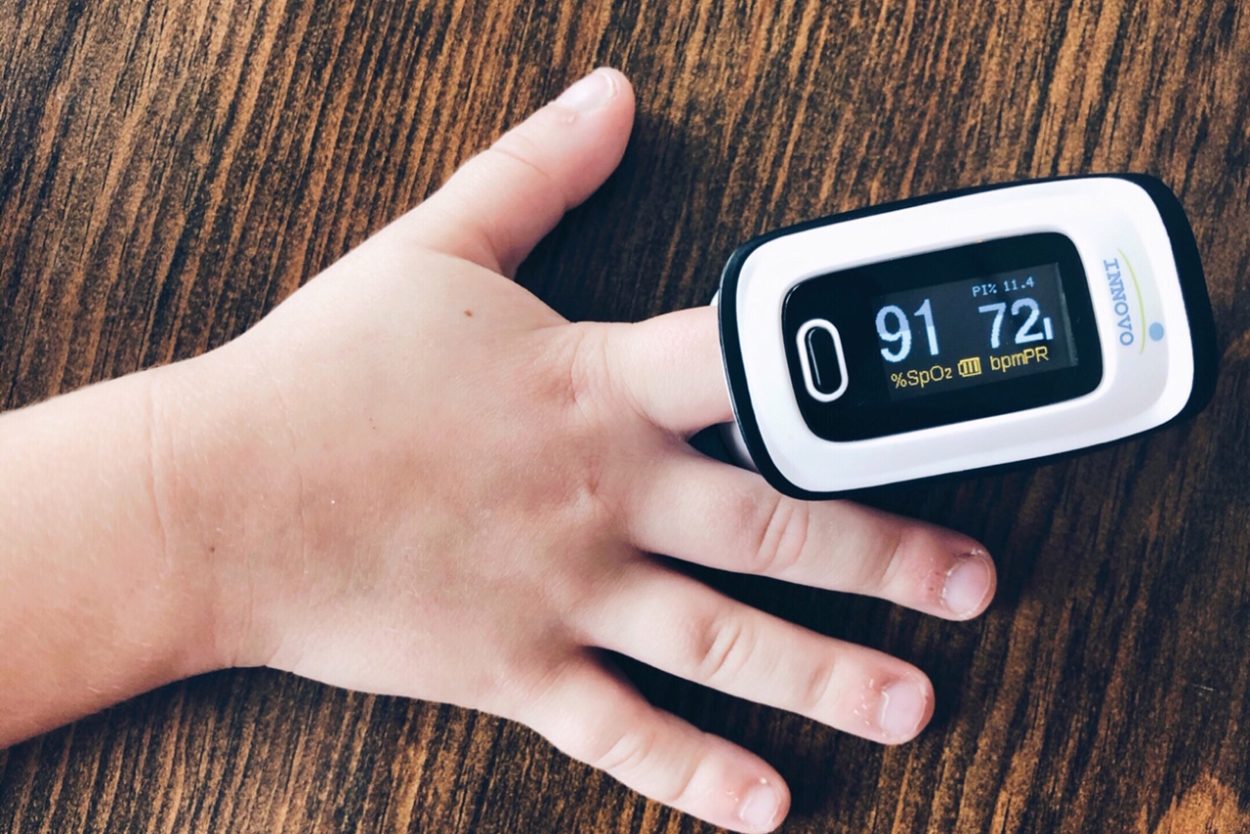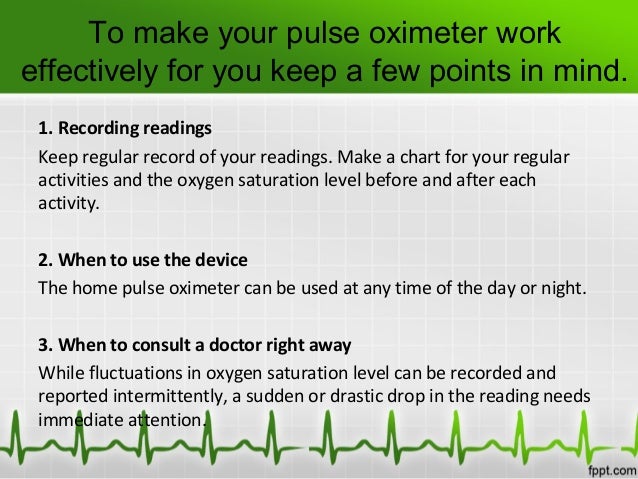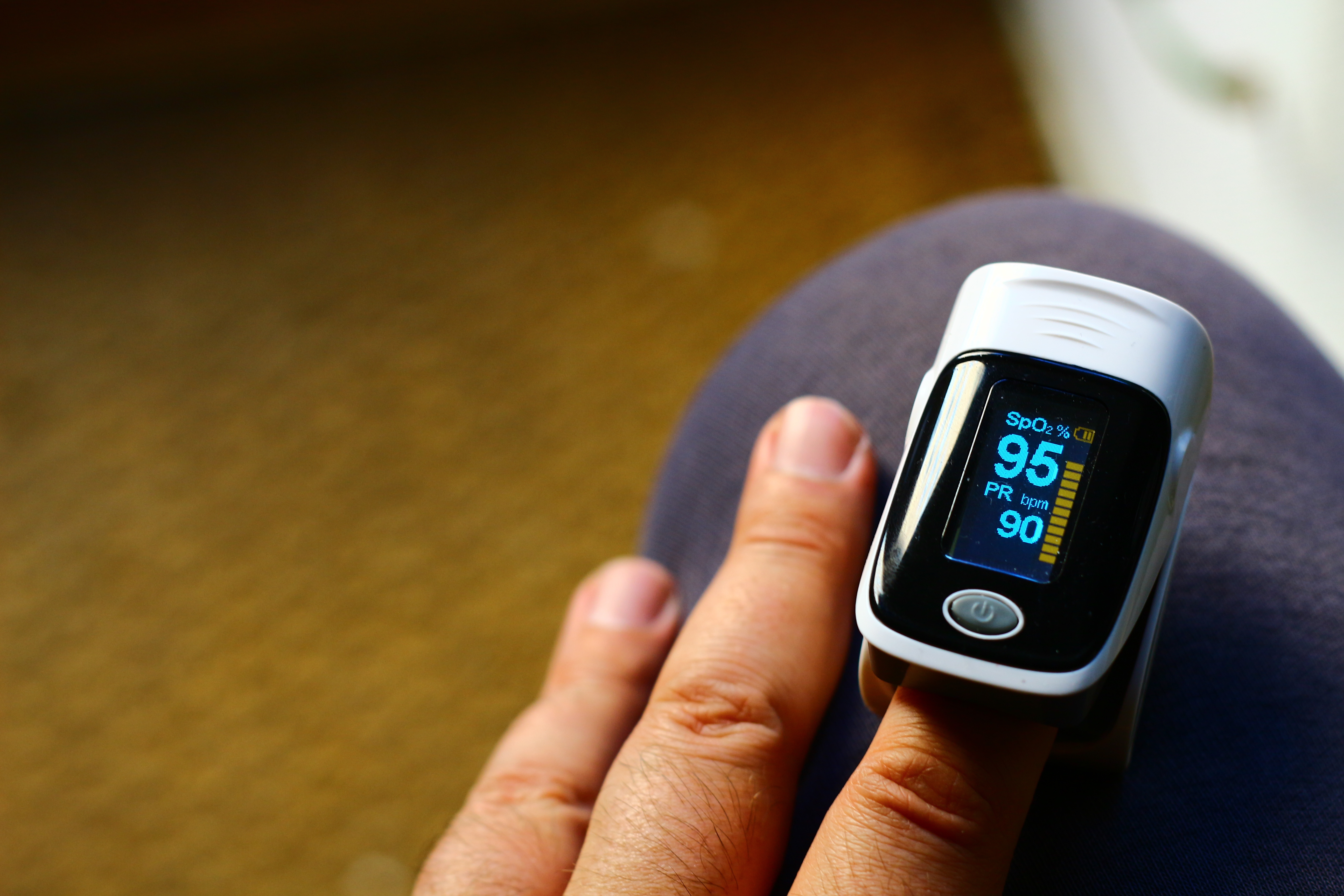- Oximeter Readings 93
- Normal Oxygen Level In Adults On Oximeter
- Normal Oxygen Level In Oximeter For Covid Patients
- Normal Oxygen Level In Oximeter Blood
If your doctor has advised the use of a pulse oximeter, you must have a million questions about the device and the process. Questions like, how to properly use the device, what to look out for and what is the normal pulse oximeter reading, are quite common.
- Results from the Best Pulse Oximeter are constant within a 2% gap of the normal st lvs. How Accurate Is Finger Oximetry? When used correctly, research has shown that the accuracy of finger pulse oximetry is between 80% and 100%.
- Oct 28, 2020 'Normal people who have working lungs, and all those steps are going well, their blood oxygen level will usually be 96-100 percent,' adds Dr. A few notches down at 94 percent, he says, will.
- What are Normal Oxygen Saturation Levels? The normal oxygen saturation level is 97–100% (OER #1). Older adults typically have lower oxygen saturation levels than younger adults. For example, someone older than 70 years of age may have an oxygen saturation level of about 95%, which is an acceptable level.

What is a Pulse Oximeter?
A pulse oximeter is a medical device used for pulse oximetry, a completely painless and non-invasive way to measure your blood oxygen saturation level. Measuring oxygen concentration means measuring the amount of oxygen in your blood.
Symptoms of low oxygen levels may include feeling short of breath, breathing faster than usual, or feeling too sick to do their usual daily activities. You should call a health care provider if you have these symptoms, even if a pulse oximeter says your oxygen levels are normal. What are normal readings? A normal level of oxygen is usually 95% or higher. Some people with chronic lung disease or sleep apnea may have normal levels around 90%. The “SpO2” reading on a pulse oximeter shows the percentage of oxygen in someone’s blood. If your home SpO2 reading is lower than 95%, call your health care provider.
The device is quite effective and pulse oximetry is an extremely simple and convenient way to monitor blood saturation. The device can accurately and instantly detect any changes in the oxygen concentration of your blood. It can accurately measure the amount of oxygen being carried to the farthest extremities of your body.

The pulse oximeter is surprisingly small. It is a clip-like device that you attach to your finger, ear lobe or toe. The device flashes light over the skin and analyzes the reflection of the light to determine the oxygen saturation levels.
The device does this by detecting changes in the reflection based on the color of the blood. Depending on the amount of oxygen in the blood, its color can change. Although the change in color is too subtle to be noticed by an untrained eye, the device’s microprocessor can instantly calculate the amount of oxygen in the blood.
Astonishingly, the device does this with surprising accuracy. A pulse oximeter can give accurate readings with a margin of error as small as two percent. The only way to get a more accurate measure of blood oxygen level is through a blood exam called arterial blood gas test.
What is a Pulse Oximeter Used For?
The sole purpose of a pulse oximeter is to check how well is oxygen being carried by your blood to every part of the body.
The following are some of the conditions that may require the use of a pulse oximeter:
- Asthma
- Lung cancer
- Chronic Obstructive Pulmonary Disease
- Pneumonia
- Anemia
- Congenital Heart Defects
- Heart Attack
The following are some of the reasons for using a pulse oximeter:
- To assess the effectiveness of a lung medication.
- To determine the effectiveness of oxygen therapy.
- To assess the changes in oxygen concentration under physical exertion.
- To determine if someone needs help with breathing.
- To monitor blood oxygen levels during surgery, especially if sedation is involved.
- To diagnose cases of sleep apnea during a sleep study.
How to Use a Pulse Oximeter?
Using a pulse oximeter is extremely simple. Since it is a clamp-like device, all you have to do is attach it to your finger, and it will start giving you reading of your oxygen concentration. Because it is such a small and simple device, it is commonly used for home-based oximetry. You don’t need any training either to use it or to understand it. Some basic information is all that’s necessary to understand its readings.
There are certain things that can interfere with the results of the device. The following are some of the things you should keep in mind:
- Poor blood circulation to the fingertips can result in inaccurate readings.
- Dark nail polish can affect the device’s accuracy.
- Cold hands can also alter the readings of the device.
- Some medical conditions can affect the results such as heart disease.
What is the Normal Pulse Oximeter Reading?
Aside from the few things mentioned above, pulse oximetry is a remarkably accurate test. So, what is the normal pulse oximeter reading? Typically, blood oxygen saturation level should be at least 89 percent.
Most healthy people have a blood oxygen saturation level of 95 and 97 percent. Oxygen concentration level of 92 percent of below can indicate a potential for hypoxemia, an oxygen deficiency in the tissues. Anything below 89 percent oxygen concentration is dangerous. Although a brief decline in oxygen concentration is not considered dangerous or harmful, if it happens regularly, it can pose a serious risk to our health.
Conclusion: Few Things to Keep in Mind
Before we end the article, there are a few things you should keep in mind. Oximeters are nothing more than medical devices. They are generally reliable, but far from perfect. It may be a lot of times, but it certainly isn’t an absolute measure of your health. Like any tool, its effectiveness depends on how you use it.
One of the most helpful things you can do is create a record of your oximetry readings. There is no much value in one particular reading in isolation. However, if you regularly log your oxygen saturation levels, you might be surprised to find out how insightful long-term data can be.
Analyzing oximetry readings over long periods of time can help you figure out prevalent physiological patterns in your blood concentration. Such insight can be used to make changes in your lifestyle that can have a long-lasting effect on your health and wellness.
Contents
- 1 Introduction
- 1.6 Below are our top 3 most recommended pulse oximeters for fingers:
Introduction
Pulse oximetry is a painless and noninvasive test that measures a person’s oxy st lvs. It can swiftly detect even slight changes in how efficiently oxy is being transported to the organs furthest from the heart, including the arms and the legs. The pulse oximeter is a small, clip-like device that is commonly placed on a finger to get readings. It is often used in a critical care institution such as hospitals and emergency rooms. Some physicians, such as pulmonologists, might use it in their office. In this article, you will learn the uses of pulse oximetry, which finger is best for pulse oximeter, and much more.
Which Finger Is Best for Pulse Oximeter?
Most health care professionals prefer index fingers. Research has proven that the index finger on the dominant hand is the most accurate. For example, if you’re right-handed, the right middle finger would be the best option.
Studies performed with readings from all fingers have discovered that pulse oximetry measurements should be obtained using the index, ring, and middle fingers. The thumb and pinky aren’t recommended as the readings from each of the three middle fingers showed to be equally accurate.
How Does Finger Oximetry Work?
Since now you have learned which finger is best for pulse oximeter, you might be wondering how does this device work?
An accurate Pulse Oximeter release beams of different wavelengths through your finger. The wavelengths target hemoglobin, which is the protein responsible for carrying oxy. Depending on how these proteins are saturated with oxy, they will absorb different wavelengths.
The device is more accurate when your hands are warm, and since oxy lvs vary throughout the day, it is advisable to several readings on different times of the day.
What Is A Normal Finger Oximetry Reading?
In normal conditions, your blood should be carrying over 89% oxy. This is the sum that keeps your body and cells healthy. If reading is lower than that, it doesn’t necessarily mean that it is dangerous unless it’s consistent or repetitive. Recorded lvs below 90% typically considered problematic and above 95%, usually regarded as healthy. Results from the Best Pulse Oximeter are constant within a 2% gap of the normal st lvs.
How Accurate Is Finger Oximetry?
When used correctly, research has shown that the accuracy of finger pulse oximetry is between 80% and 100%. The readings from pulse oximeters are deemed accurate and are employed in emergency rooms and operations.
It is also essential to be aware that utilizing pulse oximeters in your home is secure and reliable. The best Portable Pulse Oximeter will provide accurate readings, just like the ones used by physicians. However, just like the expert pulse oximeters, the home devices can sometimes give a faulty reading.
If you receive a low reading with other symptoms, then you should look for medical assistance. Low readings with no indicators are most likely the consequence of a faulty reading.

What Conditions Can Cause Inaccurate Readings?
Accurate readings are mostly achieved when the fingers are used. However, skin coloring and motion can affect the readings on a pulse oximeter.
Removing any fingernail polish provides even better results. Also, you ought to be still every time a reading is taken, as motion will affect blood circulation.
Below are our top 3 most recommended pulse oximeters for fingers:
1. Mibest Dual Color OLED
Coming at number one is the Mibest Finger Pulse Oximeter. This is one of our most favorite pulse oximeters for three main reasons: affordability, quality, and reliability. Also, we love this device since it is portable, user friendly, and comes fully packed and ready for use right out of the box.
Oximeter Readings 93
2. Innovo Deluxe Pulse Oximeter
Coming on number two is the Innovo Deluxe. If you are searching for an excellent device that will not hurt your pocket, then this is the best choice, which explains the reason why it sits close to the top of our listing. It stands out from the rest due to its reliability and accuracy.
3. AccuMed CMS-50D Fingertip Pulse Oximeter
Finally, we have AccuMed CMS-50D, which is another good alternative for everybody searching for an accurate pulse oximeter. It includes a bright LED display that is equipped with automatic screen rotation, meaning the screen will show on whatever side is the most suitable for you.
Normal Oxygen Level In Adults On Oximeter
The Bottom Line
Normal Oxygen Level In Oximeter For Covid Patients

A pulse oximeter is a valuable device for people having specific health issues. While these devices are mostly found in health care facilities such as hospitals, it might be great to have one at home. However, you need to know which finger is best for the pulse oximeter to ensure you are getting the most accurate results.
Normal Oxygen Level In Oximeter Blood
Related Review Article:
